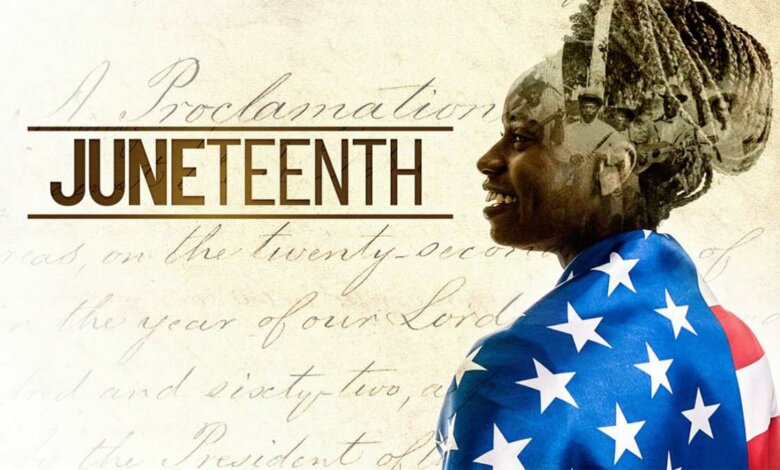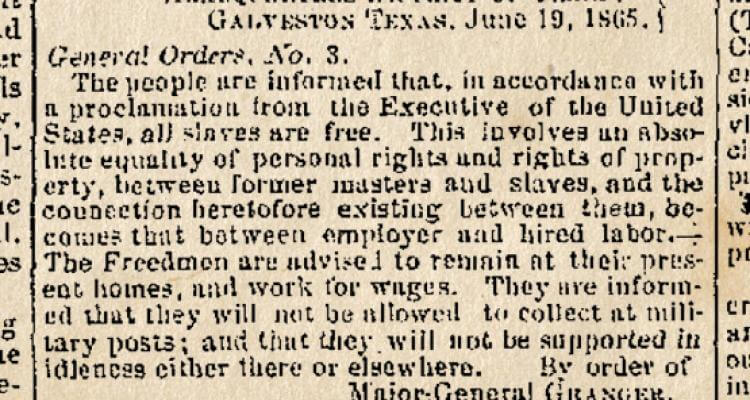What is Juneteenth Celebration?

Juneteenth – short form of “June Nineteenth” is considered the oldest African American celebration and America’s second independence day, which memorializes the last African American slaves being freed in Texas.
The 157 year-old celebration has been commemorated under different names like Freedom Day, Jubilee Day, and Cel-Liberation Day, the Scatter, Second Independence Day, and Emancipation Day.
It gives a reminder of June 19, 1865 when federal soldiers stormed Galveston, Texas, seizing control of the state and ensuring the freedom of all enslaved people; two and a half years after the Emancipation Proclamation was signed.
Since then, it has become a day for African Americans to memorialize not just their independence, but also their history, culture, and accomplishments.
On June 17, 2021, the Juneteenth National Independence Day Act, S. 475, was signed into law by President Joe Biden, making Juneteenth a federal holiday. It is the first approved holiday since a 1983 bill signed by President Ronald Reagan designated Martin Luther King Jr. Day a federal holiday.
“On Juneteenth, we recommit ourselves to the work of equity, equality, and justice. And, we celebrate the centuries of struggle, courage, and hope that have brought us to this time of progress and possibility,” said President Joe Biden in his proclamation on Juneteenth Day of Observance, 2021.
“That work has been led throughout our history by abolitionists and educators, civil rights advocates and lawyers, courageous activists and trade unionists, public officials, and everyday Americans who have helped make real the ideals of our founding documents for all,” he added.
The Emancipation Proclamation
The Emancipation Proclamation, signed on January 1, 1863 by President Abraham Lincoln, declared that all individuals kept as slaves within the rebelling states be set free.
However, the Emancipation Decree did not immediately release all enslaved people because the rebel governments refused to obey Lincoln’s proclamation since the Southern Confederacy saw itself as an independent nation.
Read Also: Remembering Ella Fitzgerald, the first Black artist to win a Grammy
As a result, the slaveholding population maintained their slave property by relocating to Texas in the latter years of the Civil War, and Texas became a stronghold of Confederate influence.
Following that, over 50,000 enslaved people were sent to Texas, thereby continuing slavery in a territory far removed from the Civil War’s slaughter and beyond the reach of the United States Army, which could free them. However, two and half years after the Emancipation Proclamation, the tides of the war changed.
The emancipation of slaves in Texas was handled and freedom provided after the Union army forced the surrender of Confederate General Edmund Kirby Smith at Galveston on June 2, 1865.
The General Order No. 3
17 days after the Civil War had come to a conclusion, the Union Army General, Gordon Granger and his forces marched to Galveston, Texas, on June 19th, 1865, to announce General Order No. 3.
The issuance of this order, together with the landing of Federal soldiers in Galveston, effectively ended the Civil War and freed those enslaved. About 250,000 persons who had been enslaved were set free. In General Order No. 3, Granger issued the following declaration:
“The people of Texas are informed that, in accordance with a proclamation from the Executive of the United States, all slaves are free. This involves an absolute equality of personal rights and rights of property between former masters and slaves, and the connection heretofore existing between them becomes that between employer and hired labor.”

The 13th Amendment to the U.S. Constitution: Abolition of Slavery
Although the General Order No. 3 established an official date of emancipation for the enslaved population, those impacted, however, faced several obstacles to their freedom.
Former slaves were required to stay in their current homes, were prohibited from joining the military, and were not to be encouraged in their “idleness.” The formerly enslaved were essentially given little more than the label of liberation.
However, with the approval of the 13th Amendment, slavery in the United States came to an end, it was passed by Congress on January 31, 1865 and ratified on December 6, 1865
Section 1. stated that “neither slavery nor involuntary servitude, except as a punishment for crime whereof the party shall have been duly convicted, shall exist within the United States, or any place subject to their jurisdiction.”
Section 2. stated that “Congress shall have power to enforce this article by appropriate legislation.”
The United States found a final constitutional solution to the question of slavery with the ratification of the 13th Amendment. Along with the 14th and 15th Amendments, the 13th Amendment is one of the three Civil War amendments that dramatically enlarged Americans’ civil rights.
Abeeb Lekan Sodiq is a Managing Editor & Writer at theafricandream.net. He’s as well a Graphics Designer and also known as Arakunrin Lekan.




